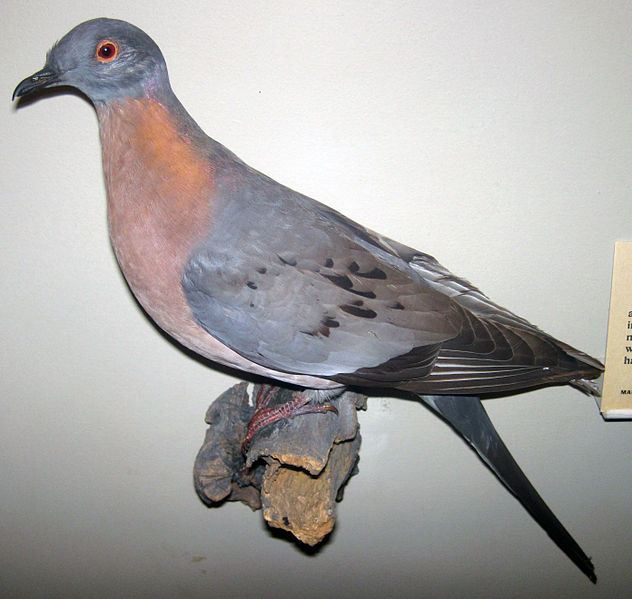ფაილი:Ectopistes migratorius (passenger pigeon).jpg

ზომა წინასწარი გადახედვისას: 632 × 599 პიქსელი. სხვა გაფართოება: 253 × 240 პიქსელი | 506 × 480 პიქსელი | 810 × 768 პიქსელი | 1 080 × 1 024 პიქსელი | 2 160 × 2 048 პიქსელი | 2 784 × 2 640 პიქსელი.
თავდაპირველი ფაილი ((2 784 × 2 640 პიქსელი, ფაილის ზომა: 1,73 მბ, MIME ტიპი: image/jpeg))
ფაილის ისტორია
დააწკაპუნეთ თარიღზე/დროზე ფაილის დასათვალიერებლად, როგორც ის მაშინ გამოიყურებოდა.
| თარიღი/დრო | მინიატიურა | ზომები | მომხმარებელი | შენიშვნა | |
|---|---|---|---|---|---|
| მიმდინარე | 16:39, 2 აპრილი 2015 |  | 2 784×2 640 (1,73 მბ) | FunkMonk | Transferred from Flickr via Flickr2Commons |
ბმულები
ამ ფაილზე ბმული მოცემულია შემდეგ გვერდებზე:
ფაილის გლობალური გამოყენება
ეს ფაილი გამოიყენება შემდეგ ვიკებში:
- გამოყენება bn.wikibooks.org-ში
- გამოყენება en.wikipedia.org-ში
- Holocene extinction
- Passenger pigeon
- User:Nutcracker100
- List of the prehistoric life of Alabama
- List of the prehistoric life of Florida
- List of the prehistoric life of Tennessee
- List of the prehistoric life of West Virginia
- List of the prehistoric life of North Carolina
- List of the Cenozoic life of Alabama
- List of the Cenozoic life of Wyoming
- List of the Cenozoic life of Virginia
- List of the Cenozoic life of North Carolina
- List of the Cenozoic life of Georgia (U.S. state)
- List of the Cenozoic life of Florida
- List of the Cenozoic life of California
- User:Catfurball
- User:Abyssal/Image captions to use
- Wikipedia:Userboxes/Birds
- User:Abyssal/Aspect ratio table
- User:Toohak113
- User:Diriector Doc/Ubx/Passenger Pigeon
- Wikipedia talk:WikiProject Userboxes/Ideas/Archive 15
- User:Lin Xuexi
- User:Diriector Doc/UbxGalaries/Nature
- User:Wikiselkie
- User:Geekgecko
- User:Missingnohk97
- User:Cedelmwood/Userboxes
- User:Mishmash Ideas
- User:좀비 브렌다
- User:Pinkelekoladele
- User:Asocos
- User:CryolophosaurusEllioti/Userboxes
- User:.samtxt.
- User:Pigginn
- User:Trashgoose
- User:WHEOOButEncyclopedia
- User:Davefrfr
- User:Mushroom133
- User:Locust Valley
- User:I.Do.In.Fact.Exist
- გამოყენება en.wikibooks.org-ში
- გამოყენება es.wikipedia.org-ში
- გამოყენება fr.wikipedia.org-ში
- გამოყენება la.wikipedia.org-ში
- გამოყენება no.wikipedia.org-ში
- გამოყენება pl.wikipedia.org-ში
- გამოყენება pt.wikipedia.org-ში
იხილეთ, ამ ფაილის გლობალური გამოყენება.
